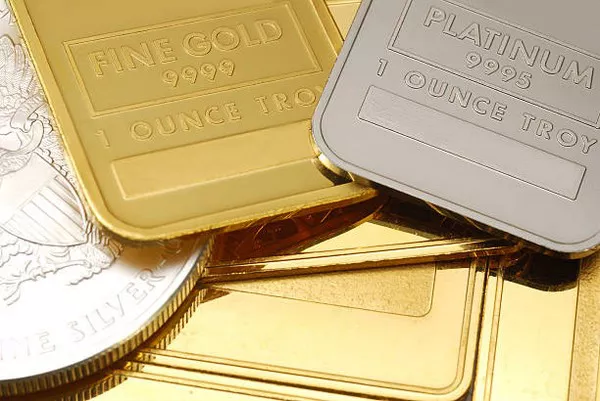In the intricate dance of global financial markets, few elements possess the enduring allure and intrinsic value of gold. Revered for millennia as a store of wealth and a hedge against uncertainty, gold’s price dynamics are influenced by a myriad of factors, from geopolitical tensions to economic indicators. Among these factors, interest rates wield considerable influence, their fluctuations sending ripples through the complex tapestry of the gold market. In this article, we delve into the relationship between rising interest rates and the behavior of gold, exploring the mechanisms at play and their implications for investors and policymakers alike.
Understanding the Dynamics
To grasp the impact of rising interest rates on gold, it’s essential to comprehend the underlying mechanisms governing this relationship. Traditionally, interest rates and gold prices have exhibited an inverse correlation. When interest rates rise, the opportunity cost of holding non-yielding assets like gold increases, prompting investors to favor interest-bearing instruments such as bonds and Treasury securities. Consequently, demand for gold diminishes, exerting downward pressure on its price.
Conversely, when interest rates decline, the appeal of gold as a store of value strengthens, as the foregone interest income from alternative investments becomes less significant. Consequently, investors may allocate more capital to gold, driving its price higher.
However, while this inverse relationship serves as a useful framework, it’s important to recognize that real-world market dynamics are often more nuanced. Various factors, including inflation expectations, currency movements, and market sentiment, can influence the relationship between interest rates and gold prices, adding layers of complexity to their interaction.
The Impact of Rising Interest Rates
Against this backdrop, let’s explore how gold typically responds to the scenario of rising interest rates:
Pressure on Prices: Historically, as interest rates climb, gold prices tend to face downward pressure. The rationale behind this trend lies in the opportunity cost perspective—higher interest rates increase the relative attractiveness of interest-bearing assets, thereby reducing demand for gold.
Impact on Investor Sentiment: Beyond the direct effect on prices, rising interest rates can also influence investor sentiment and market dynamics. In periods of monetary tightening, investors may perceive higher interest rates as a signal of economic strength and stability, leading them to reallocate their portfolios away from safe-haven assets like gold and towards riskier assets such as equities.
Currency Dynamics: Another crucial factor to consider is the interplay between interest rates, currencies, and gold prices. In a rising interest rate environment, the currency of a country may strengthen as investors seek higher returns on their investments. A stronger currency can, in turn, weigh on gold prices, as gold is typically denominated in US dollars and tends to exhibit an inverse relationship with the dollar.
Inflation Expectations: While rising interest rates may dampen gold’s appeal as a hedge against inflation, the broader economic context matters. If interest rate hikes are driven by concerns over inflationary pressures, rather than strong economic fundamentals, gold may retain its allure as an inflation hedge despite the rise in rates.
Central Bank Policies: Central banks play a pivotal role in shaping interest rate dynamics, and their policies can significantly influence gold prices. While tightening monetary policy through interest rate hikes may initially dampen gold demand, central bank actions aimed at curbing inflation or addressing economic imbalances could ultimately support gold prices over the long term.
Navigating the Landscape: Implications for Investors
For investors navigating the complex terrain of the gold market amidst rising interest rates, several strategies and considerations come into play:
Diversification: Diversification remains a cornerstone of prudent investment strategy, particularly in times of market volatility and uncertainty. While rising interest rates may pose challenges for gold prices, the yellow metal’s role as a portfolio diversifier and hedge against tail risks can still offer valuable benefits to investors.
Monitoring Economic Indicators: Keeping a close eye on key economic indicators, such as inflation data, central bank announcements, and GDP growth figures, can provide insights into the broader macroeconomic environment and guide investment decisions in relation to gold and other assets.
Assessing Risk Appetite: Investor risk appetite and time horizons play a crucial role in determining the appropriate allocation to gold within a portfolio. While short-term fluctuations in gold prices may occur in response to rising interest rates, investors with a long-term perspective may view such periods as potential buying opportunities, considering gold’s historical role as a store of value.
Currency Considerations: Given the interplay between interest rates, currencies, and gold prices, investors should factor currency dynamics into their investment decisions. Hedging strategies or allocation adjustments based on currency outlooks can help mitigate risks and enhance portfolio resilience.
Staying Informed: In a rapidly evolving financial landscape, staying informed and adaptable is paramount. Regularly monitoring market developments, analyzing trends, and seeking expert insights can provide investors with the knowledge and agility needed to navigate changing market conditions effectively.
See Also Unlocking the Value: Is 18 Karat Gold Pawnable?
Conclusion
In the intricate interplay between interest rates and gold prices, rising interest rates often exert downward pressure on gold, reflecting the influence of opportunity costs and investor sentiment. However, the relationship between these variables is multifaceted, influenced by a myriad of factors including inflation expectations, currency dynamics, and central bank policies.
For investors, navigating the landscape of rising interest rates requires a nuanced understanding of these dynamics, coupled with a disciplined investment approach that prioritizes diversification, risk management, and informed decision-making. While challenges may arise in the short term, gold’s enduring appeal as a store of value and hedge against uncertainty underscores its relevance within a well-rounded investment portfolio, even in the face of rising interest rates. By remaining vigilant, adaptable, and informed, investors can position themselves to capitalize on opportunities and weather market fluctuations effectively in pursuit of their long-term financial objectives.


